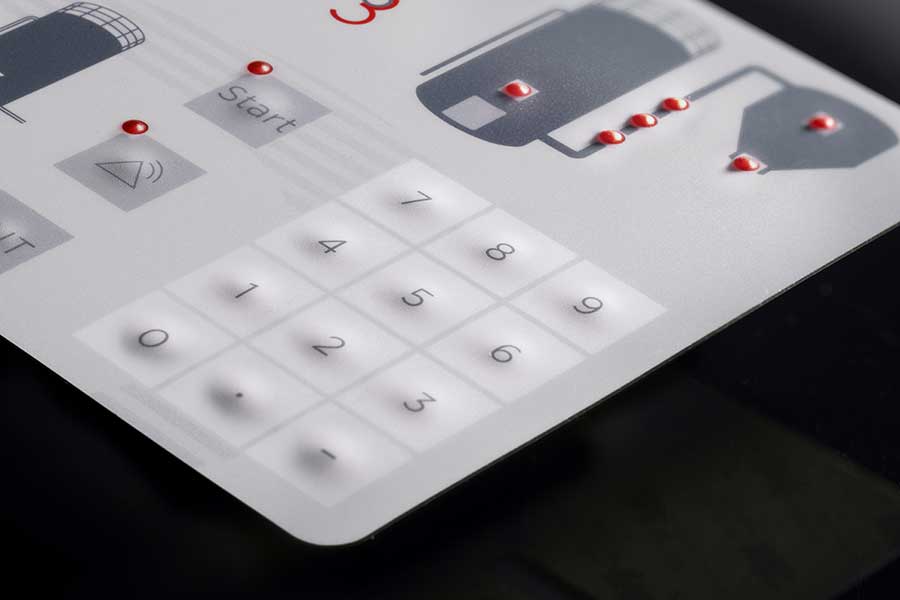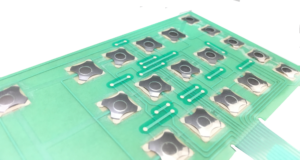Membrane Switch Over Modern Technology: The Secret to Trustworthy and Cost-efficient User Interfaces
Membrane button modern technology has become a critical part in the layout of individual interfaces, supplying both dependability and cost-effectiveness across a diverse variety of applications. Its durable building makes certain resistance to ecological obstacles, while the versatility in design enables tailored remedies that meet particular sector demands. As we discover the complex benefits of membrane switches, their possibility for technology questions about future applications and evolving fads. What does the following chapter hold for this modern technology in a significantly electronic landscape?
Recognizing Membrane Switch Over Innovation
Membrane layer switch technology is a widely used user interface solution in numerous electronic devices, providing a seamless blend of functionality and style. This innovation incorporates numerous layers of materials, normally being composed of a graphic overlay, spacer layer, and a circuit layer. The visuals overlay displays the user interface elements, while the spacer layer separates the circuit layer from the overlay up until a user triggers a button.
When stress is applied to the overlay, the circuit layer finishes the electrical circuit, sending out a signal to the device. This mechanism permits various setups, including responsive responses and backlighting choices, improving customer communication. Membrane switches are usually made using durable materials such as polyester or polycarbonate, guaranteeing long life and resistance to environmental aspects like dampness and dirt.
The convenience of membrane switches over enables their application in varied sectors, including medical tools, consumer electronics, and industrial controls. Their small style enables combination into space-constrained atmospheres, giving an efficient user interface without compromising aesthetic appeal. Comprehending the complexities of membrane layer button modern technology is crucial for producers and developers seeking to develop dependable and reliable human-machine interfaces.
Key Advantages of Membrane Layer Buttons
While various user interface remedies exist, membrane layer switches offer unique benefits that make them a preferred selection in various applications. One of the main advantages is their toughness; membrane layer buttons are designed to hold up against extreme ecological problems, including wetness, dust, and temperature variations, guaranteeing resilient efficiency. This strength considerably minimizes the need for regular replacements, thus decreasing overall maintenance prices.

Moreover, membrane layer switches are light-weight and compact, making them ideal for applications where area is limited. Their low-profile design adds to a sleek look without endangering functionality.
Cost-effectiveness is likewise a notable benefit, as the production process for membrane layer switches has a tendency to be less costly contrasted to typical mechanical switches. This affordability, integrated with their reliability and ease original site of setup, positions membrane layer changes as a practical remedy for a large variety of markets looking for efficient and effective interface.
Applications Across Different Industries
Exactly how do membrane layer buttons adapt to the varied demands of various industries? Membrane layer switch innovation is significantly recognized for its convenience, making it suitable for a wide array of applications throughout several markets. In the medical field, membrane buttons are made use of in diagnostic equipment and individual surveillance devices, where their durability and convenience of cleansing are vital for maintaining health criteria. The automobile market employs these buttons in control panels and read here control board, supplying a streamlined aesthetic while ensuring straightforward operation.
In customer electronic devices, membrane buttons give a compact solution for push-button controls and home appliances, boosting customer experience via instinctive layout. Furthermore, the industrial market leverages membrane layer switches for machinery control panels, gaining from their resistance to extreme settings, such as moisture and dirt.
Armed forces and aerospace applications also utilize membrane layer buttons for their reliability and ability to stand up to extreme problems, guaranteeing operational performance in vital situations. In addition, the food and beverage sector embraces these switches for automated systems, where hygiene and convenience of procedure are vital. Eventually, membrane buttons are customized to meet the unique demands of each sector, proving their necessary function in contemporary innovation user interfaces
Design and Customization Options

In the world of membrane layer button technology, design and customization alternatives play a pivotal function in improving functionality and user interaction. These buttons can be customized to fulfill specific operational demands and aesthetic preferences, making them flexible elements in different applications.
Among the primary customization options is the format of the button itself, which can be made to fit special interface and ergonomic factors to consider. By changing the shape, size, and arrangement of buttons, suppliers can produce instinctive layouts that promote convenience of use. Additionally, the unification of different shades and visuals overlays enables branding and boosted visibility, making certain that individuals can swiftly recognize functions.
Moreover, membrane buttons can be engineered with numerous tactile responses mechanisms, such as raised switches or distinct clicks, to boost the individual experience. Different products can likewise be chosen for longevity and ecological resistance, attending to factors such as moisture, temperature level variations, and chemical exposure.
Ultimately, the extensive layout and personalization choices offered in membrane switch innovation equip organizations to produce tailored options that not just fulfill useful needs yet also align with their branding and functional demands.

Future Fads in Membrane Buttons
As membrane layer button modern technology proceeds to evolve, future trends are significantly concentrated on improving individual experience and integrating advanced performances. One significant fad is the integration of touch-sensitive and capacitive innovations into typical membrane layer switches. This growth allows for more intuitive customer interfaces, providing responsive comments while maintaining a streamlined layout.
Another arising pattern is the use of environmentally friendly products, driven by the growing demand for lasting manufacturing techniques. Makers are looking for to reduce their carbon footprint by making use of recyclable substratums and low-impact inks, aligning with worldwide sustainability objectives.
Moreover, the increase of the Web of Points (IoT) is motivating the consolidation of smart functions into membrane layer buttons. Enhanced connection options will make it possible for gadgets to interact with each various other, permitting seamless assimilation right into broader systems.
In addition, innovations in printing innovations, such as digital printing, are enabling for higher design adaptability and modification. This makes it possible for producers to create elaborate layouts and lively shades cost-effectively.

Verdict
In final thought, membrane this content layer switch innovation represents a crucial development in interface layout, providing significant benefits in sturdiness, modification, and cost-effectiveness. Its prevalent applicability throughout varied industries underscores its significance in modern-day innovation. As innovations remain to arise, particularly in touch-sensitive user interfaces and sustainable products, the potential for membrane changes to enhance customer experience and performance remains encouraging. Continued expedition of this innovation will likely yield even more enhancements and broaden its extent in future applications.